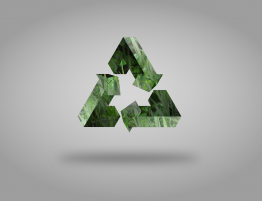
Living in hot and steamy Florida, it’s not only hard to imagine there was a time in history before air conditioning, but also somewhat horrifying. The heat, the humidity… well, in other words… it was hot and steamy.
So not only to make us more grateful for this relief from the toasty outdoor elements, but also to inform us about some “cool” (yes, cool) history, these are the historic beginnings of air conditioning as we know it.
“Simpler” Times
Period films and TV series make the 1900s (and prior) seem like amazing, romantic eras that should be longed for. And that may be true if you like keeping cool by fanning yourself with anything that could move air, or wading in a chilly body of water. Ice was tough to come by (without the application of chemistry) in warm climates before ice chests (and later freezers) were invented, and who knew what “refrigerant” was? Sure, Benjamin Franklin, revered for his numerous political dealings as well as his inventions, had taken a shot at the cooling problem—he discovered that alcohol had cooling properties that could get a boost from some other chemicals too, but it would be more than a century before a real cooling solution would be usable by the general public.
Air Movement
Following the turn of the last century, electric fans were a welcome improvement over manual paper versions, but air conditioning as we know it was still a long way off.
The Cool Invention
The birth of the true “cool” invention that would transform the livability of our country (and all those that reach or maintain average temperatures above 80°-ish, whether seasonally or year-round) is the modern air conditioner: the handiwork of Willis Carrier, a Western NY native with an engineering degree from Cornell, who would revolutionize cooling in 1902. The genius behind his invention was controlling the amount of moisture in the air, which is key to a comfortable environment—in terms of both temperature and humidity. By developing a machine that blew air over refrigerated coils, he was able to solve a heat and humidity problem for a publishing company, and it led to the forming of his own: Carrier Air Conditioning of America.
Of course, if you’ve ever spent numerous hours inside in air conditioning (as in, daily) or especially in a confined space like a car or airplane, you know how drying air conditioning can be. So it’s not surprising that other great minds started to adjust the technology to not only reduce humidity but to restore it to beneficial levels. Engineer Stuart Cramer, in 1906, coined the term “air conditioning” with his device that added moisture back into the environment to meet the needs of his company’s textile mill.
Cooling Comes Home
It would take more than a decade after its invention for the air conditioner to be installed residentially, but it didn’t become more mainstream until the 1930s, in the form of window units. Car travel got in on the action with the 1939 Packard. Home A/C grew through the ’50s and ’60s, but central air in the ’70s was the next major innovation in the industry.
Prior to air conditioning, some of the hottest climates in the U.S. were pretty inhospitable. So it’s no wonder that the growth of southern population tracks with the growth of the cooling industry. Since A/C has been adopted sporadically across the country, did you grow up with air conditioning? Could you live without it now? When do you first remember enjoying the relief of A/C? What do you think the U.S. population would look like if air conditioning didn’t exist?







